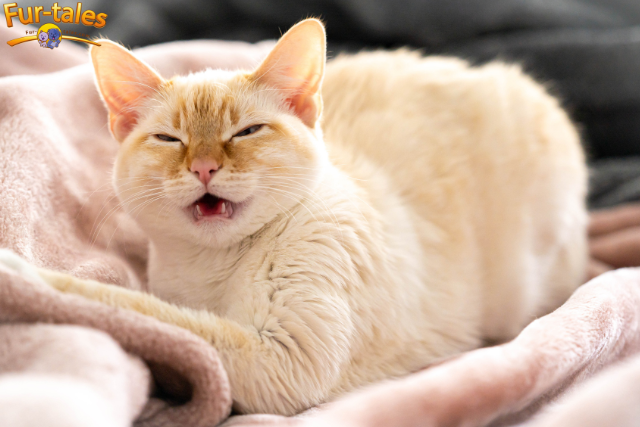
Cat Sneezing: Causes and When it’s a Concern
A sneezing cat might seem harmless—or even cute at first. But if those little “achoo!” moments start happening frequently or are accompanied by other symptoms, it could indicate something more serious than just a tickle in the nose.
Sneezing in cats can range from a simple response to dust to signs of an underlying illness. Understanding the potential causes and knowing when to seek veterinary help is key to keeping your feline companion healthy and happy.
Let’s explore why cats sneeze, what symptoms to watch for, and when it’s time to visit the vet.
Common Causes of Cat Sneezing
1. Irritants in the Environment
Just like humans, cats can sneeze in response to dust, strong odors, or airborne particles.
Common irritants include:
- Dust and pollen
- Air fresheners or cleaning sprays
- Cigarette smoke
- Perfume or scented candles
- Cat litter with fine dust
Occasional sneezing from environmental triggers is normal, especially if it happens once or twice and stops.
2. Upper Respiratory Infections
The most frequent medical cause of sneezing is an upper respiratory infection (URI), particularly in kittens and shelter cats.
Common culprits:
- Feline herpesvirus (FHV-1)
- Feline calicivirus
- Chlamydia or Bordetella bacteria
Symptoms may also include:
- Runny nose or eyes
- Conjunctivitis
- Decreased appetite
- Lethargy
- Coughing or wheezing
These infections are often contagious and may require antibiotics or antivirals, especially in younger or immunocompromised cats.
3. Allergies
Cats can develop seasonal or environmental allergies that lead to sneezing, though it’s less common than in dogs or humans.
Possible allergens include:
- Pollen
- Mold spores
- Dust mites
- Certain fabrics or cleaning agents
Allergic reactions may also involve itchy skin, watery eyes, or coughing.
4. Dental Problems
Dental infections, especially in the upper canine teeth, can spread to the nasal passages and cause sneezing or nasal discharge.
Signs of dental-related sneezing include:
- Bad breath
- Drooling
- Pawing at the mouth
- Decreased eating or chewing on one side
Prompt dental care is needed to prevent the infection from spreading.
5. Foreign Objects
Something as simple as a blade of grass, piece of litter, or dust bunny can get lodged in your cat’s nasal passage and cause sneezing fits.
If the sneezing is sudden and persistent, especially after playtime or exploring, a foreign body might be the cause.
6. Fungal Infections
Though less common, fungal infections such as cryptococcosis can cause chronic sneezing, often accompanied by nasal swelling or discharge. These cases require veterinary diagnostics and antifungal treatment.
When Sneezing Is Normal
Sneezing here and there—especially if it’s infrequent and not accompanied by other symptoms—is usually not a concern.
Examples of non-serious sneezing:
- A couple sneezes after sniffing a dusty corner
- Sneezing once or twice when entering a new environment
- Sneezing during grooming or play
If your cat seems otherwise happy, eats normally, and displays no other signs of illness, it’s likely nothing serious.
When Sneezing Becomes a Concern
You should consult your veterinarian if your cat’s sneezing becomes frequent, severe, or is accompanied by other symptoms.
Warning signs to watch for:
- Sneezing multiple times a day over several days
- Green or yellow nasal discharge
- Bleeding from the nose
- Swollen or runny eyes
- Lack of appetite or weight loss
- Lethargy or hiding
- Breathing difficulty or wheezing
Persistent sneezing combined with these symptoms may point to an infection, allergy, or serious underlying condition requiring medical attention.
Diagnosis and Veterinary Care
Your vet may perform the following to determine the cause:
- Physical examination of the mouth, nose, and throat
- Blood work to check for infection or inflammation
- Nasal swabs or cultures to identify viruses or bacteria
- Dental X-rays if a dental issue is suspected
- Imaging (X-rays or CT scans) for chronic or severe cases
Once diagnosed, treatment may include:
- Antibiotics or antivirals
- Antihistamines or steroids for allergies
- Dental cleaning or extractions
- Removal of nasal obstructions
- Antifungal medications for rare infections
How to Help a Sneezing Cat at Home
If your cat’s sneezing is mild or recovering from a URI, you can support their healing with some at-home care:
Tips to try:
- Use a humidifier to ease nasal congestion
- Gently wipe away discharge with a soft, damp cloth
- Keep them hydrated and well-fed
- Reduce exposure to dust, smoke, and strong fragrances
- Use unscented litter to avoid irritation
- Keep their vaccinations up to date, especially if they go outdoors or are around other cats
Preventing Sneezing and Respiratory Illnesses
While not all sneezing can be prevented, you can take steps to lower your cat’s risk:
- Schedule regular vet checkups
- Feed a nutritious, immune-supporting diet
- Maintain a clean living environment
- Minimize stress (which can trigger viral flare-ups)
- Keep indoor cats indoors to avoid contagions
- Quarantine new cats before introducing them to other pets
Image Designed Using Canva
